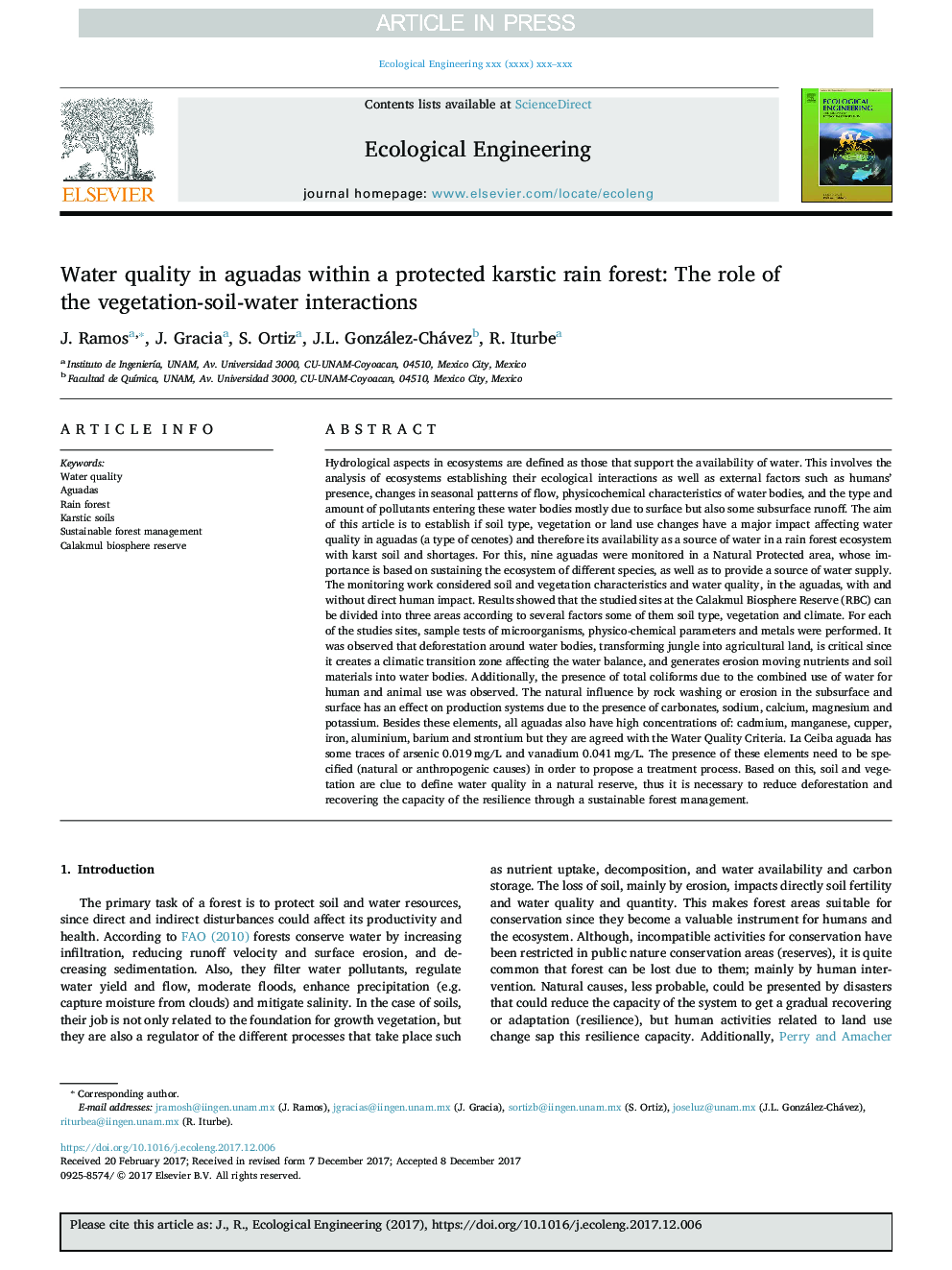| Article ID | Journal | Published Year | Pages | File Type |
|---|---|---|---|---|
| 10223348 | Ecological Engineering | 2018 | 10 Pages |
Abstract
Hydrological aspects in ecosystems are defined as those that support the availability of water. This involves the analysis of ecosystems establishing their ecological interactions as well as external factors such as humans' presence, changes in seasonal patterns of flow, physicochemical characteristics of water bodies, and the type and amount of pollutants entering these water bodies mostly due to surface but also some subsurface runoff. The aim of this article is to establish if soil type, vegetation or land use changes have a major impact affecting water quality in aguadas (a type of cenotes) and therefore its availability as a source of water in a rain forest ecosystem with karst soil and shortages. For this, nine aguadas were monitored in a Natural Protected area, whose importance is based on sustaining the ecosystem of different species, as well as to provide a source of water supply. The monitoring work considered soil and vegetation characteristics and water quality, in the aguadas, with and without direct human impact. Results showed that the studied sites at the Calakmul Biosphere Reserve (RBC) can be divided into three areas according to several factors some of them soil type, vegetation and climate. For each of the studies sites, sample tests of microorganisms, physico-chemical parameters and metals were performed. It was observed that deforestation around water bodies, transforming jungle into agricultural land, is critical since it creates a climatic transition zone affecting the water balance, and generates erosion moving nutrients and soil materials into water bodies. Additionally, the presence of total coliforms due to the combined use of water for human and animal use was observed. The natural influence by rock washing or erosion in the subsurface and surface has an effect on production systems due to the presence of carbonates, sodium, calcium, magnesium and potassium. Besides these elements, all aguadas also have high concentrations of: cadmium, manganese, cupper, iron, aluminium, barium and strontium but they are agreed with the Water Quality Criteria. La Ceiba aguada has some traces of arsenic 0.019â¯mg/L and vanadium 0.041â¯mg/L. The presence of these elements need to be specified (natural or anthropogenic causes) in order to propose a treatment process. Based on this, soil and vegetation are clue to define water quality in a natural reserve, thus it is necessary to reduce deforestation and recovering the capacity of the resilience through a sustainable forest management.
Related Topics
Life Sciences
Agricultural and Biological Sciences
Ecology, Evolution, Behavior and Systematics
Authors
J. Ramos, J. Gracia, S. Ortiz, J.L. González-Chávez, R. Iturbe,
